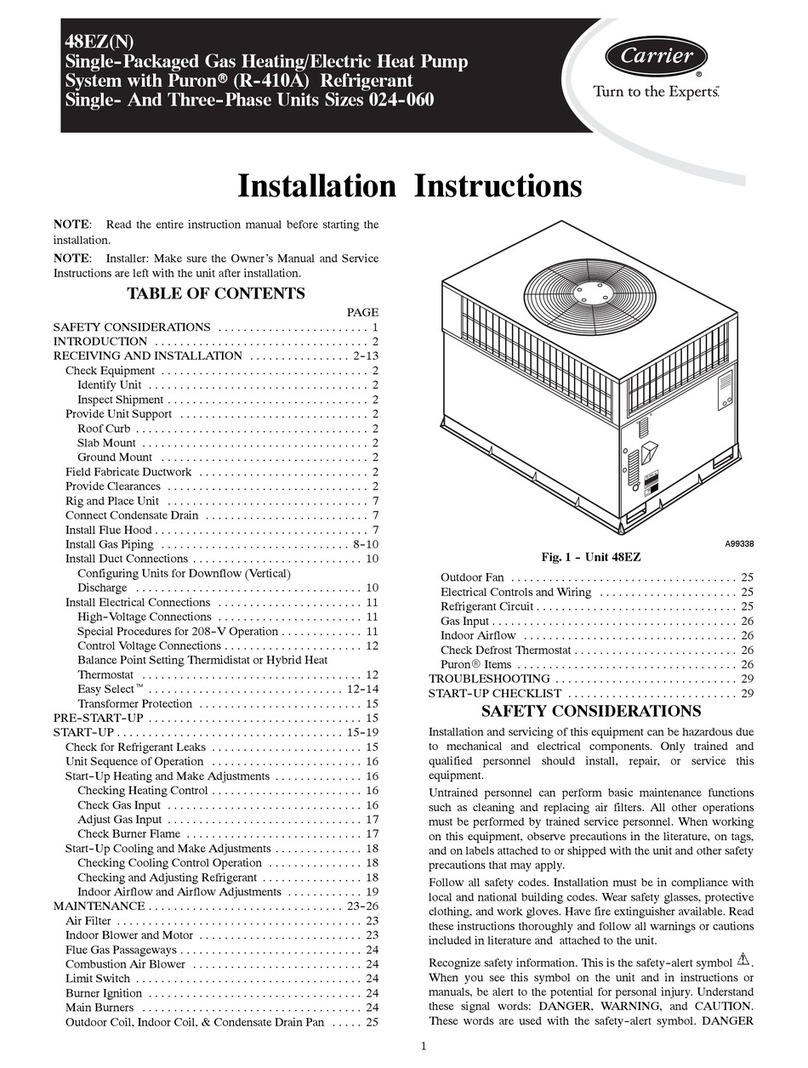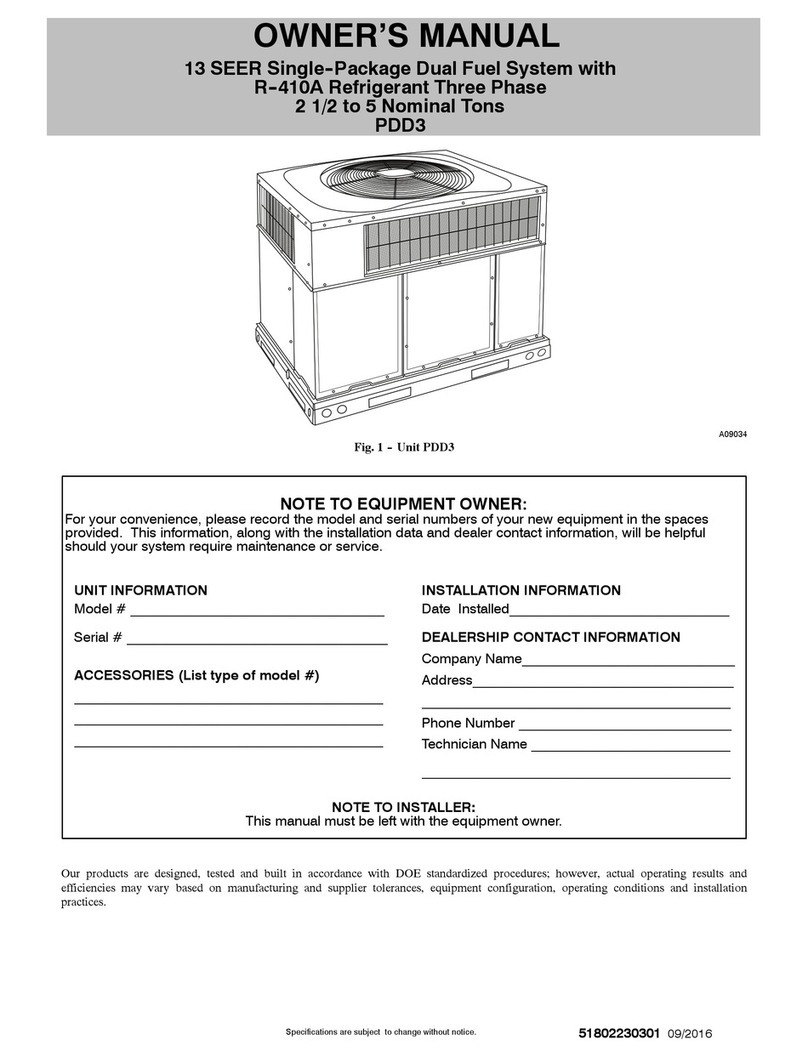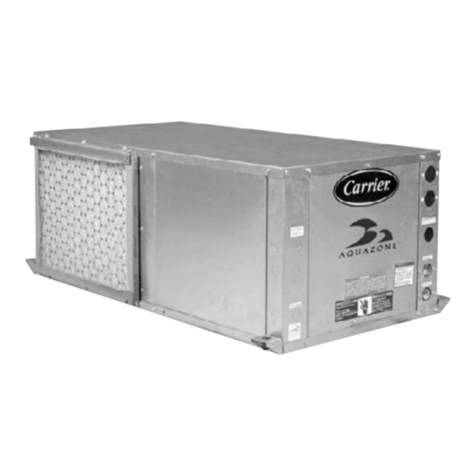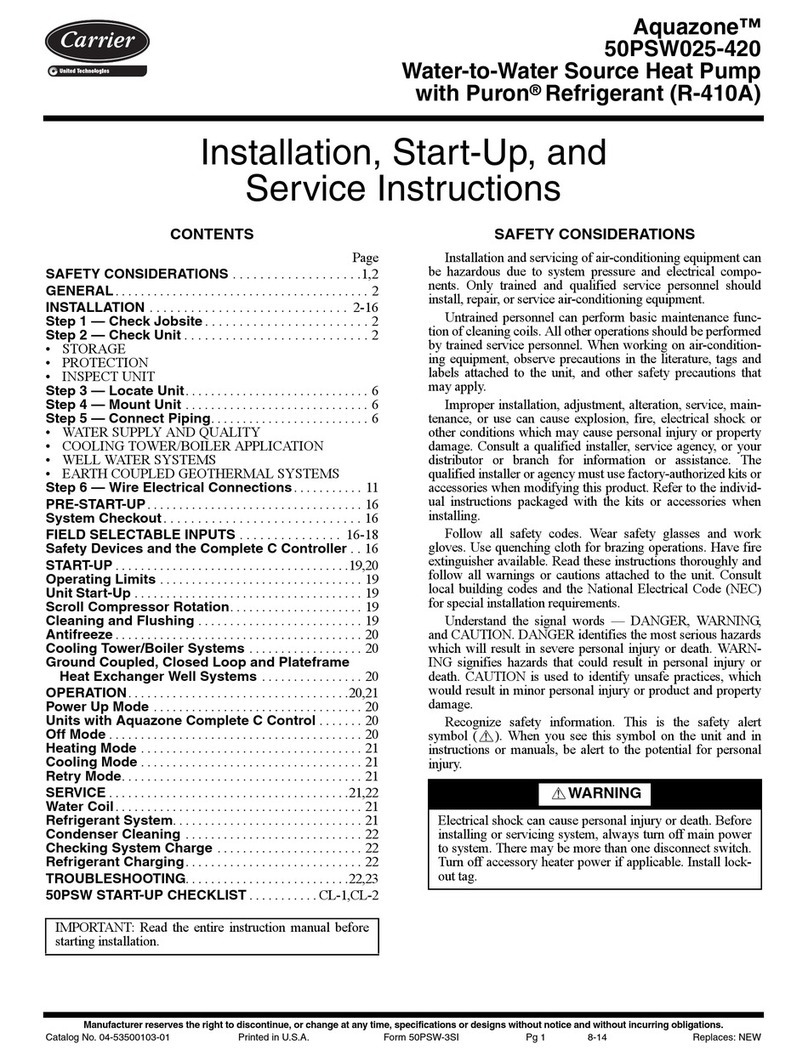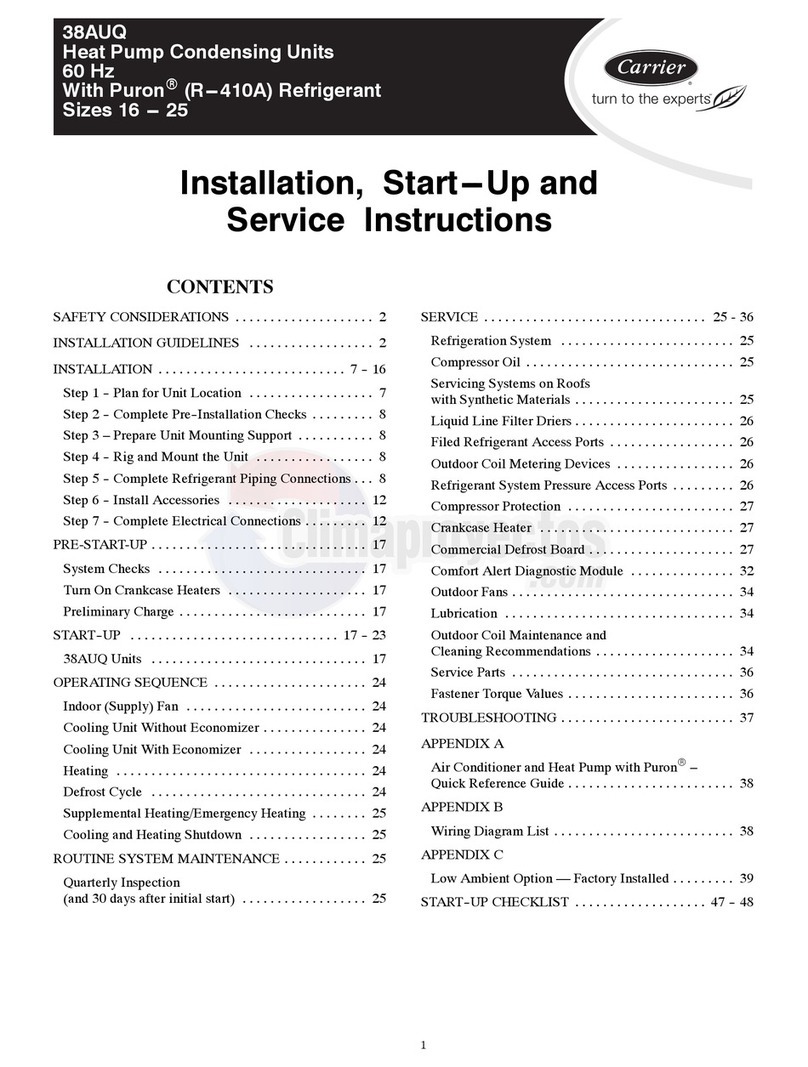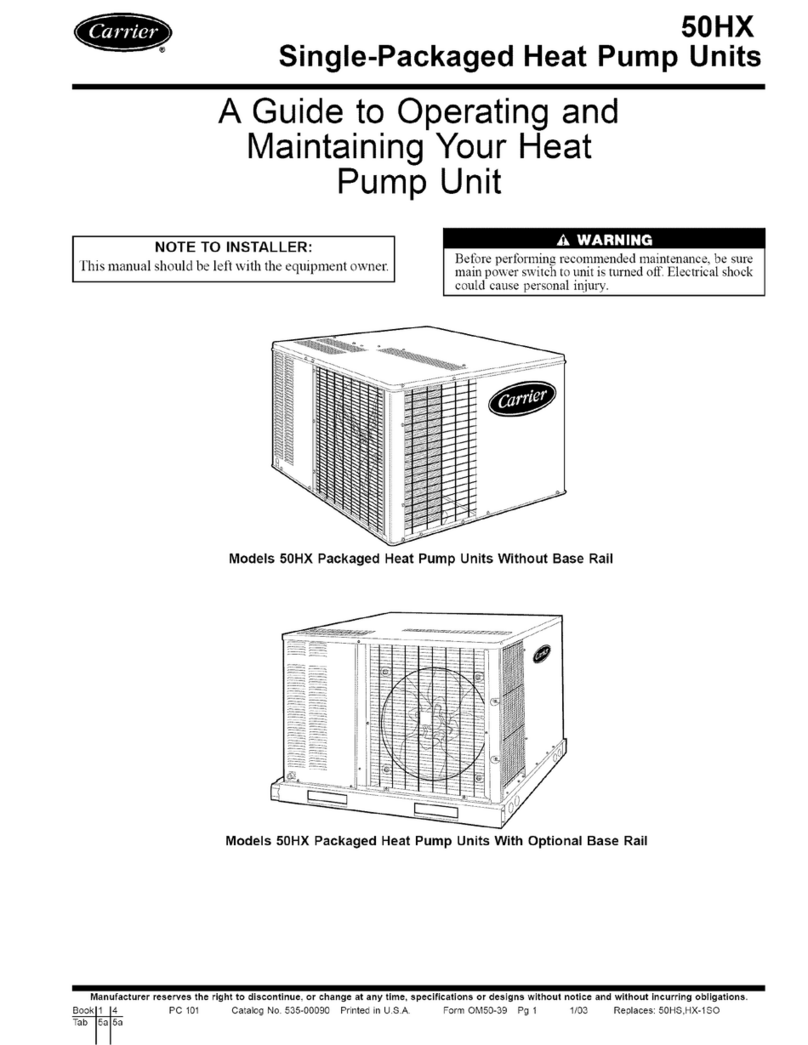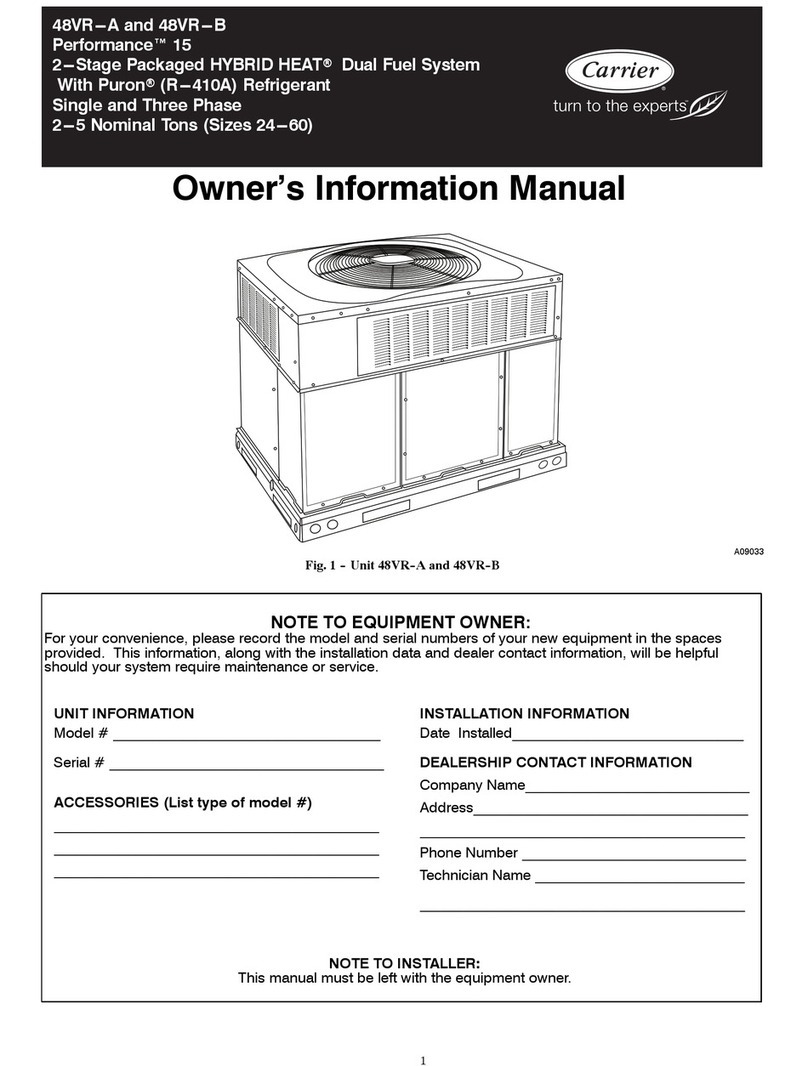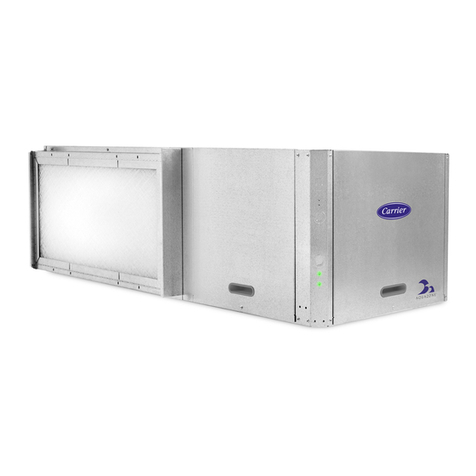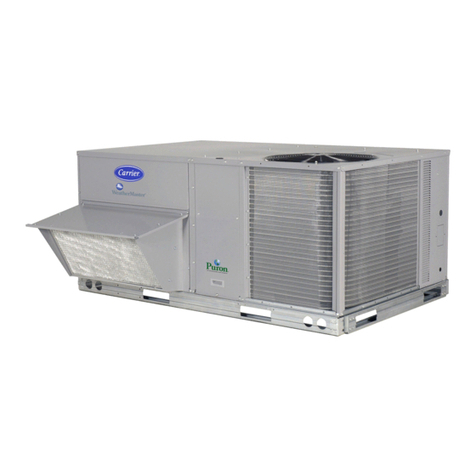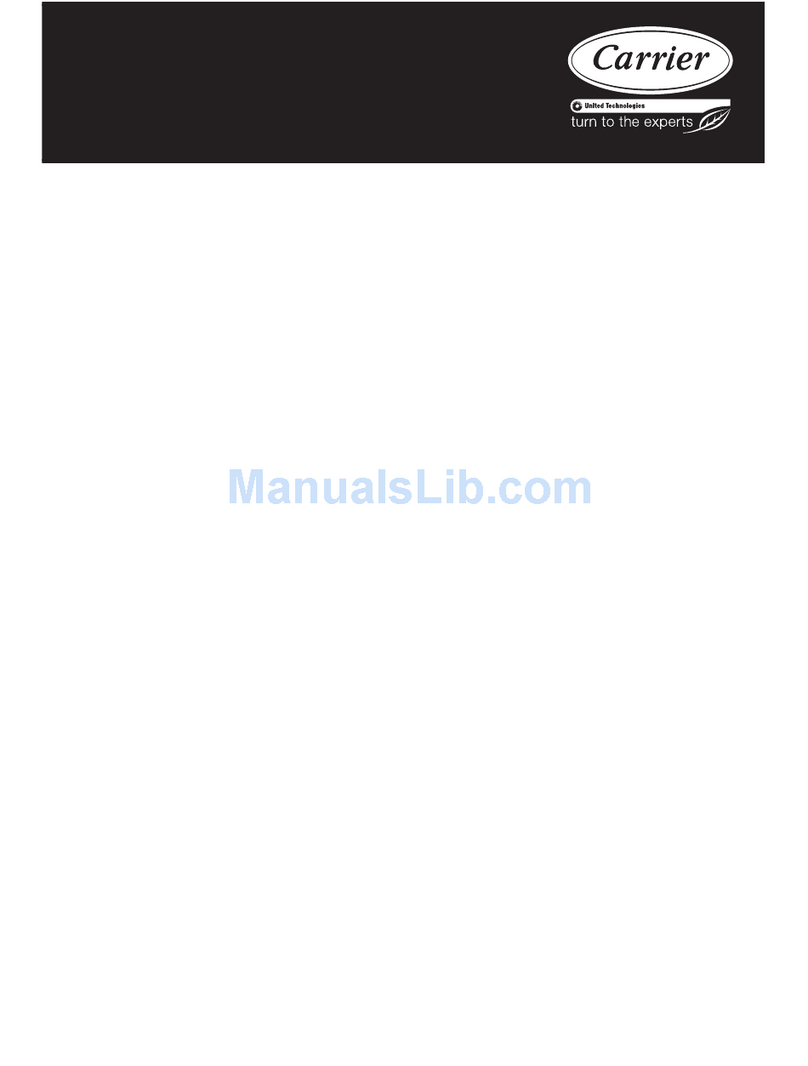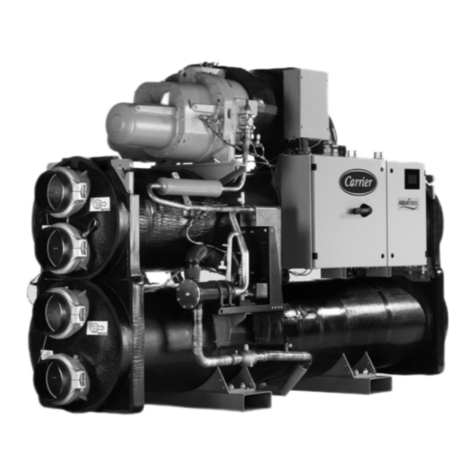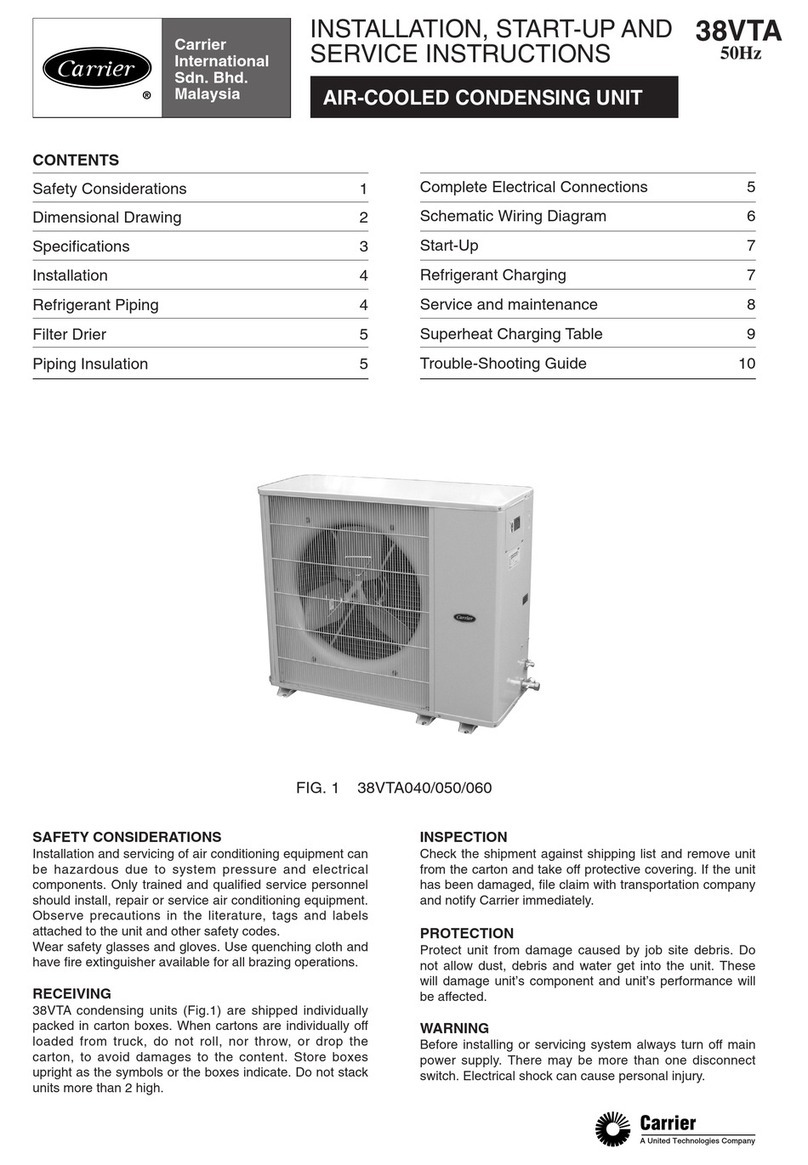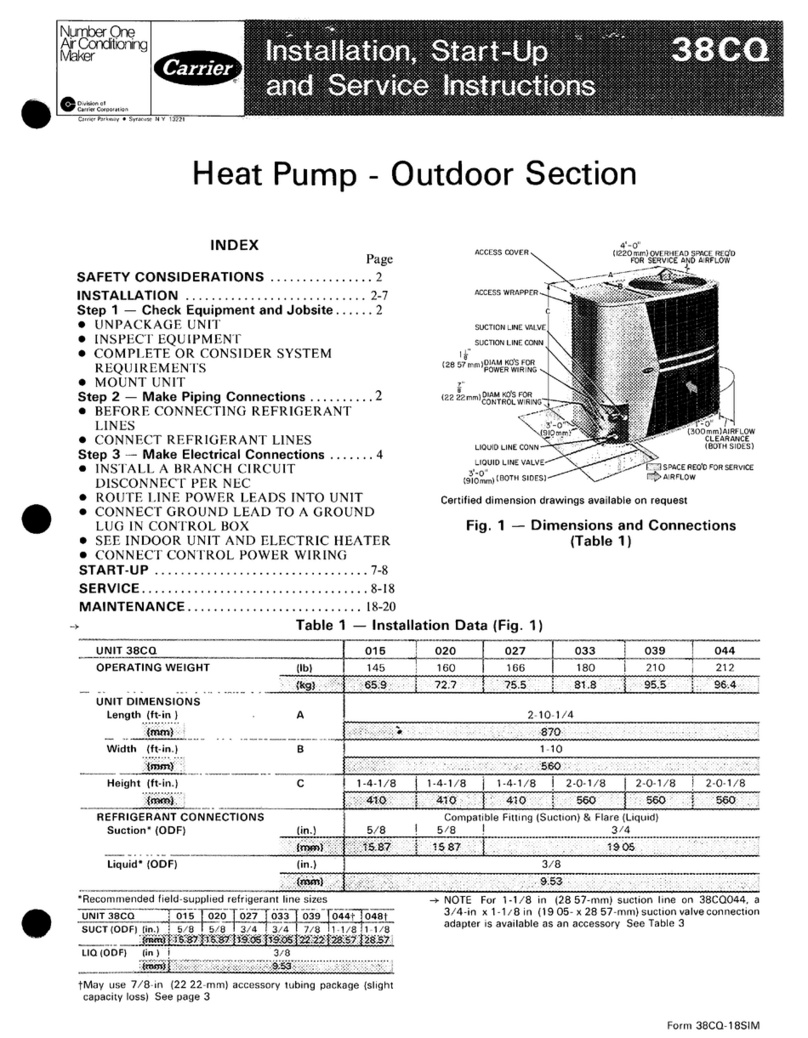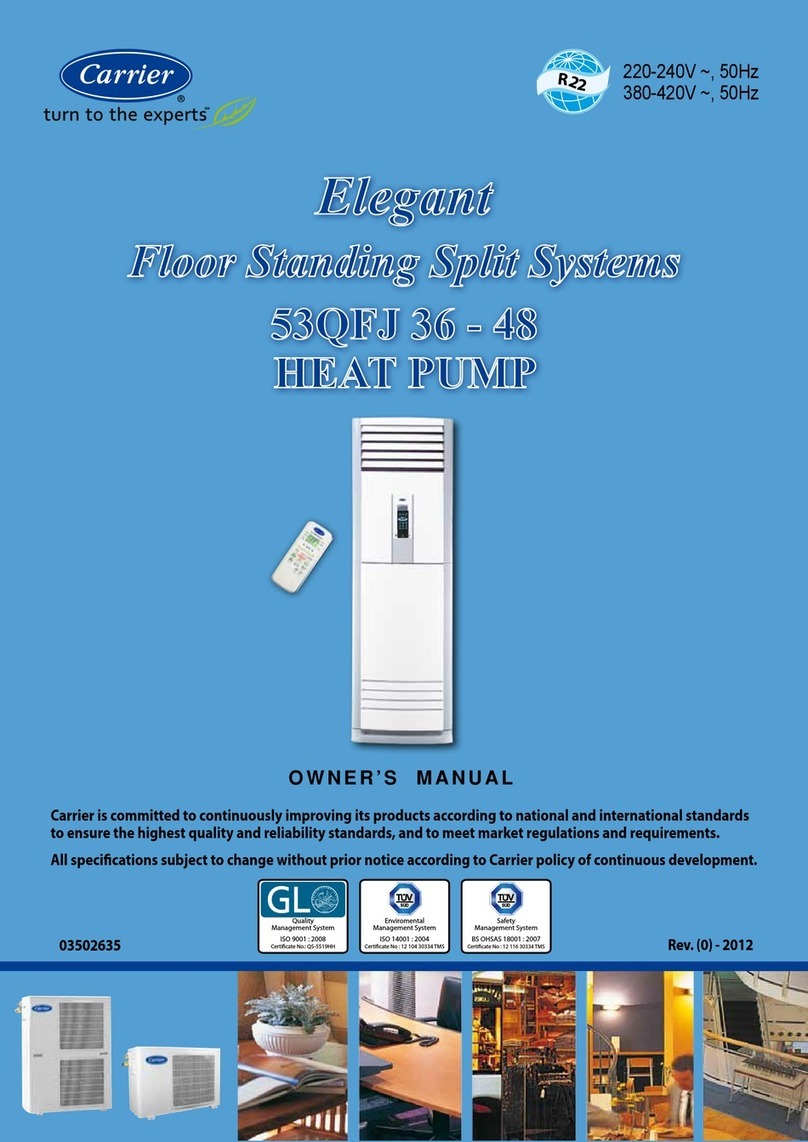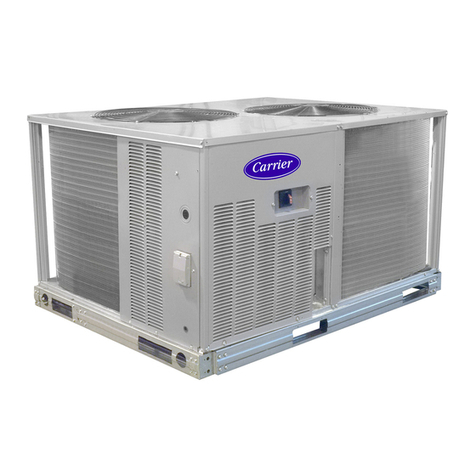
9
SMALFUNCTION OUTPUT: Alarm output is Normally Open
(NO) dry contact. If pulse is selected the alarm output will be
pulsed. The fault output will depend on the dip switch setting for
”ALARM”. If it is set to ”CONST”, a constant signal will be
produced to indicate a fault has occurred and the unit requires
inspection to determine the type of fault. If it is set to ”PULSE”, a
pulse signal is produced and a fault code is detected by a remote
device indicating the fault. See L.E.D Fault Indication below for
blink code explanation. The remote device must have a
malfunction detection capability when the UPM board is set to
”PULSE”.
NOTE: If 24 VAC output is needed, R must be wired to
ALR--COM terminal; 24 VAC will be available o the ALR--OUT
terminal when the unit is in the alarm condition.
SLED FAULT INDICATION-- Two LED Indicators are
provided.
GREEN: Power LED indicates 118--30 VAC presentat the board.
RED: Fault indicator wit blink codes as follows:
— One Blink ---- High pressure lockout
— Two Blinks ---- Low pressure lockout
— Three Blinks ---- Freeze sensor lockout
— Four Blinks ---- Condensate overflow
— Five Blinks ---- Brownout
SDISPLAY OUTPUT: The Display output is a pulse output
connected to the Unit Diagnostic Display (UDD) and it pulses
24VAC when the unit is in an lockout alarm condition.
STEST DIP SWITCH: A test dip switch is provided to reduce all
time delays settings to 10 seconds during troubleshooting or
verification of unit operation.
CAUTION
!
UNIT DAMAGE AND/OR OPERATION HAZARD
Failure to follow this caution may result in unit damage
and/or improper equipment operation.
Operation of unit in test mode can lead to accelerated wear
and premature failure of components. The ”TEST” switch
must be set back to ”NO” after troubleshooting/ servicing.
SFREEZE SENSOR: The default setting for the freeze limit trip is
26_F (sensor number 1); however this can be changed to 15_Fby
cutting the R30 resistor located on top of the DIP switch SW1.
Since freeze sensor 2 is dedicated to monitor the evaporator coil, it
is recommended to leave the factory default setting on the board.
The UPM controller will constantly monitor the refrigerant
temperature with the sensor mounted close to the condensing
water coil between the thermal expansion valve and water coil. If
temperature drops below or remains at the freeze limit trip for 30
seconds, the controller will shut the compressor down and enter
into a soft lockout condition. Both the status LED and the Alarm
contact will be active.
The LED will flash the code associated with this alarm condition
three (3) times. If this alarm occurs 2 times (or 4 if Dip switch is set
to 4) within an hour, the UPM controller will enter into a hard
lockout condition. It will constantly monitor the refrigerant
temperature with the sensor mounted close to the evaporator
between the thermal expansion valve and evaporator coil as
showninFig.6.
If temperature drops below or remains at the freeze limit trip for
30 seconds, the controller will shut the compressor down and
enter into a soft lockout condition. Both the status LED and the
alarm contact will be active. The LED will flash the code
associated with this alarm condition six (6) times. If this alarm
occurs 2 times (or 4 if Dip switch is set to 4) within an hour, the
controller will enter into a hard lockout condition.
CAUTION
!
UNIT DAMAGE AND/OR OPERATION HAZARD
Failure to follow this caution may result in unit damage
and/or improper equipment operation.
Freeze sensor will not guard against the loss of water. A
flow switch is recommended to prevent the unit from
running if water flow is lost or reduced.
SINTELLIGENT RESET: If a fault condition is initiated, the 5
minute delay on break time period is initiated and the unit will
restart after these delays expire. During this period the fault LED
will indicate the cause of the fault. If the fault condition still exists
or occurs 2 or 4 times (depending on 2 or 4 setting for Lockout dip
switch) before 60 minutes, the unit will go into a hard lockout and
requires a manual lockout reset.
A single condensate overflow fault will cause the unit to go into a
hard lockout immediately, and will require a manual lockoutreset.
SLOCKOUT RESET: A hard lockout can be reset by turning the
unit thermostat off and then back on when the “RESET” dip
switch is set to “Y” or by shutting off unit power at the circuit
breaker when the “RESET” dip switch is set to “R”.
NOTES: The blower motor will remain active during a lockout
condition.
SEQUENCE OF OPERATION
Cooling Mode
Energizing the “O” terminal energizes the unit reversing valve thus
placing the unit into cooling mode. The fan motor starts when the
“G” terminal is energized.
When the thermostat calls for cooling (Y), the loop pump or
solenoid valve, if present, is energized and compressor will start.
Once the thermostat is satisfied, the compressor shuts down
accordingly and the fan ramps down to either FAN ONLY mode or
OFF over a span of 30 seconds (ECM Motors).
NOTE: A fault condition initiating a lockout will de--energize the
compressor.
Heating Mode
Heating operates in the same manner as cooling, but with the
reversing valve de--energized. The compressor will run until the
desired setpoint temperature on the thermostat is achieved.
Once the thermostat is satisfied, the compressor shuts down and the
fan ramps down in either FAN ONLY mode or turns off over a
span of 30 seconds.
